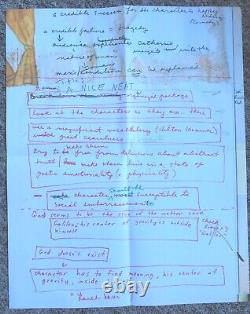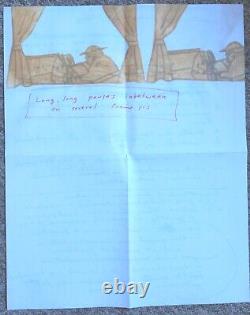
- New Rare Art
- Artist
- Andy Warhol (16)
- Banksy (85)
- Beejoir (8)
- Billy Childish (9)
- Damien Hirst (17)
- David Hockney (9)
- David Shepherd (8)
- Death Nyc (30)
- Emek (8)
- Jean-michel Basquiat (8)
- Jj Adams (16)
- Kaws (15)
- Keith Haring (9)
- Mike Shenton (12)
- Mr. Brainwash (18)
- Pure Evil (24)
- Shag (josh Agle) (9)
- Shepard Fairey (34)
- Stik (11)
- Tracey Emin (17)
- Other (1892)
- Brand
- Material
- Size
- Theme
- Type
Ida Applebroog Documenta Poster Rare














Ida Applebroog - Documenta 13 Poster. Approximate dimensions - 41 x 51cm. Ida Applebroog was born in 1929 in the Bronx, N. And lives in New York. Her work is in the permanent collections of numerous museums, including Whitney Museum, the Guggenheim Museum, MoMA, and the Metropolitan Museum, New York.
She has received awards including the MacArthur Foundation Fellowship (1998) and the Lifetime Achievement Award, College Art Association (1995). In 1955, documenta was held in Kassel for the first time on the initiative of Arnold Bode. Since then, it has come to define a key periodic moment when, at five-year intervals, contemporary art is generated, exhibited, and elaborated. The people who are interested in art and in its relation to the world meet in Kassel, assess the situation, and share their views. During the German civic reconstruction of the early 1950s, documenta was conceived as a direct response to the Third Reich's policies toward "degenerate art".
Over the years, documenta came to signify, in the context of Western Europe, a space in which freedom of expression could be achieved. More recently, it has been a platform for a critique of Euro-Centrism. In contrast to other periodic international exhibitions that have emerged from the world fair models of the nineteenth century, a strong theoretical grounding and a sense of urgency in relation to the question of art's place in society have characterized documenta.
September 16, 2012 marked the final day of the dOCUMENTA (13) exhibition. After 100 days open to the public the total number of visitors in Kassel was 905,000, amounting to 110,000 additional visitors or a 14% increase from the previous edition of documenta in 2007. An additional 27,000 people visited the dOCUMENTA(13) exhibition held in Kabul from June 20 to July 19, 2012, bringing the total number of visitors to 887,000.
An exhibition is an unfolding organism, like a vegetable bud. It comes from intuitions, then it forms an instinct, then an opinion, then a knowledge; like a plant-which contains in itself many other living entities-it has roots, buds and fruit. On June 9, 2012, when the exhibition opened in Kassel, we said that dOCUMENTA (13) was dedicated to artistic research and forms of imagination that explore commitment, matter, things, embodiment, and active living in connection with, yet not subordinated to, theory. We said these were terrains where politics are inseparable from a sensual, energetic, and worldly alliance between current research in various scientific and artistic fields and other knowledges, both ancient and contemporary, and that dOCUMENTA (13) was driven by a holistic and non-logocentric vision that is skeptical of the persisting belief in economic growth, a vision that is shared with, and recognizes, the shapes and practices of knowing of all the animate and inanimate makers of the world, including people. And now we add that an exhibition could be thought of as a pre-reflexive consciousness, a qualitative duration of consciousness without itself.
A bliss able to go beyond the aporias of the subject and the object-an experience of life no longer dependent on the first, nor submitted to the latter. Art is ceaselessly posed in life. And this indefinite life posed in art allows us to grasp the lived and living, to understand life as carried by the events, and by the singularities actualized in subject/objects. Art does not just come after life, but rather it offers the immensity of a temporality constituting spaces where one sees the event yet to come in the absolute of an immediate consciousness. Please look at my other items including rare modern and contemporary art and design pieces.
